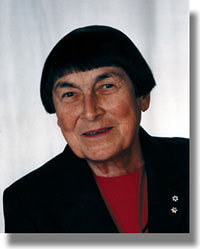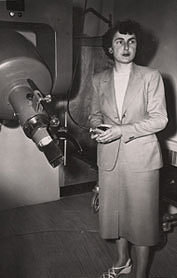Today, “radiation” is one of the standard treatments for patients with cancer, but in 1950 it was virtually unheard of: nuclear medicine was a brand new field.
The Cobalt 60 Therapy Unit was the first effective Cobalt Radiation Therapy machine for use on patients with cancer. It was developed in the early 1950’s at a time when Canada was a world leader in the production of powerful nuclear reactors. Although the Atomic Energy of Canada was also in the process of designing a machine to treat cancers, the Cobalt 60 Therapy Unit was the first one designed specifically for patients. The machine took a radioactive source of cobalt and delivered it to patients using high intensity radiation.

Sylvia Fedoruk was the only woman on a 4-member team led by Dr. Harold E. Johns at the University of Saskatchewan which accelerated this breakthrough technology in nuclear medicine. In fact, Sylvia was the only woman doing medical physics research in Canada at that time!
Later in her career, she worked on developing the Dosimeter. The Dosimeter was an improvement to the radiation machine because it allowed doctors to regulate the dose of radiation received by the patient.
In addition, she developed a device that determined whether or not a patient’s thyroid was cancerous through the use of radioactive iodine. All of her innovations helped save lives. In fact, the first cancer patient to use the Cobalt 60 Therapy Unit lived another 50 years and died only recently, well into her nineties!
Sylvia Fedoruk grew up in rural Saskatchewan. Although her father was a schoolteacher and her mother had only an elementary education, they were both determined that Sylvia would receive all the encouragement she needed to do well in school. Ambitious, and driven to succeed, Sylvia soon discovered she had two great talents: a gift for mathematics and a gift for track and field.
Her passion for mathematics led her to specialize in engineering and physics, ultimately leading to a career in nuclear medicine. She was the only female in her first year physics and engineering courses at the University of Saskatchewan.

Her passion for sports led her to compete both in individual competition: javelin, shot-put, discus, and softball throw, (she won a medal in each!) and a variety of team sports such as basketball, hockey, and volleyball. She was also on the first Canadian Women’s Championship Curling team in 1961, and, when the team visited Ottawa, she curtseyed before the Governor General. Little did she know that, one day in the future, she herself would become Lieutenant Governor of Saskatchewan, and stay at Rideau Hall! As a member of the Joyce McKee curling team, Sylvia was inducted into the Saskatchewan Sports Hall of Fame in 1973.
In all areas of her life, she competed amongst men with focus, determination and the ability to “go the distance.” Yet Sylvia Fedoruk claims she never experienced discrimination due to gender. She never felt she had to demand equality; she felt she received it, both in the laboratory and on the playing field. Sylvia believes that education – acquiring knowledge and skills, and a balanced life – making leisure an integral part of our lives, are the keys to success. Sylvia is living proof. She rose to the full rank of Professor in the College of Medicine, as well as having received many honorary university degrees, and went on to receive the Order of Canada, and the Saskatchewan Order of Merit. She was Chancellor of the University of Saskatchewan from 1986-1989 and Lieutenant Governor of Saskatchewan from 1988-1994.
In 1999, at the age of 72, Sylvia Fedoruk received the Distinguished Canadian Award from the Seniors University Group Inc. at the University of Regina.
Margaret A. Bennett
to Bruce Ricketts: I read your article on Women on our Bank Notes, where you talk about Sylvia Fedoruk (Riverview Park Review): I went to high school with Sylvia and know she was a genius, but PLEASE record the fact that we were at Walkerville C.I. NOT Walkerton High School!!!
Marg. Bennett (Ottawa)